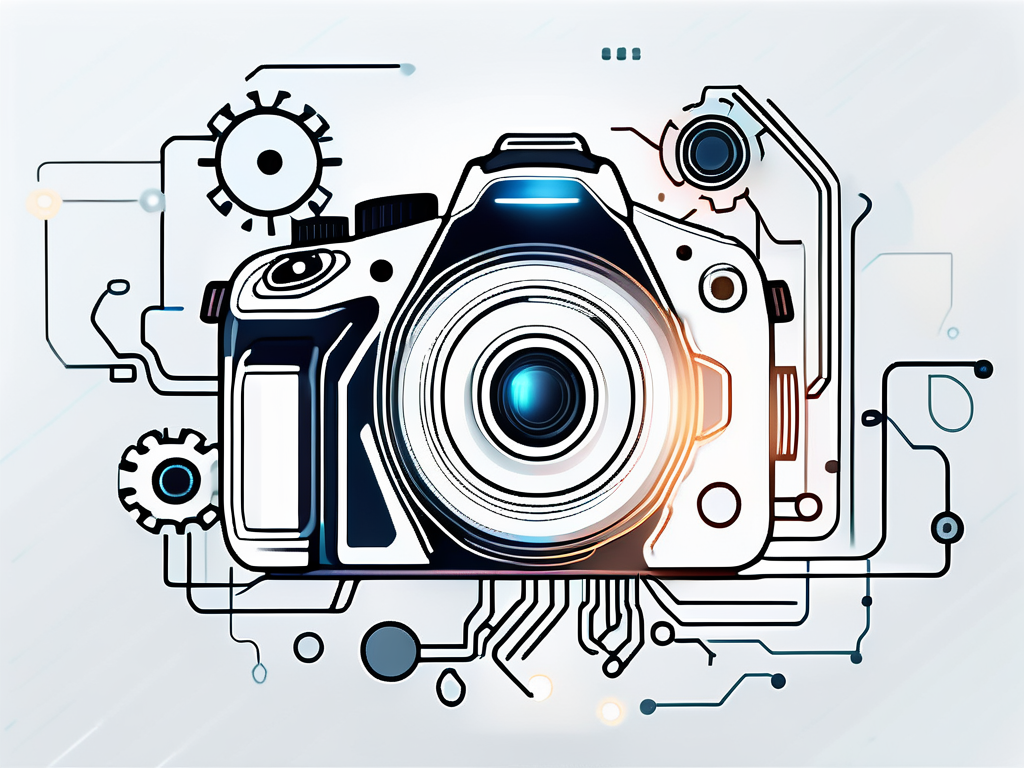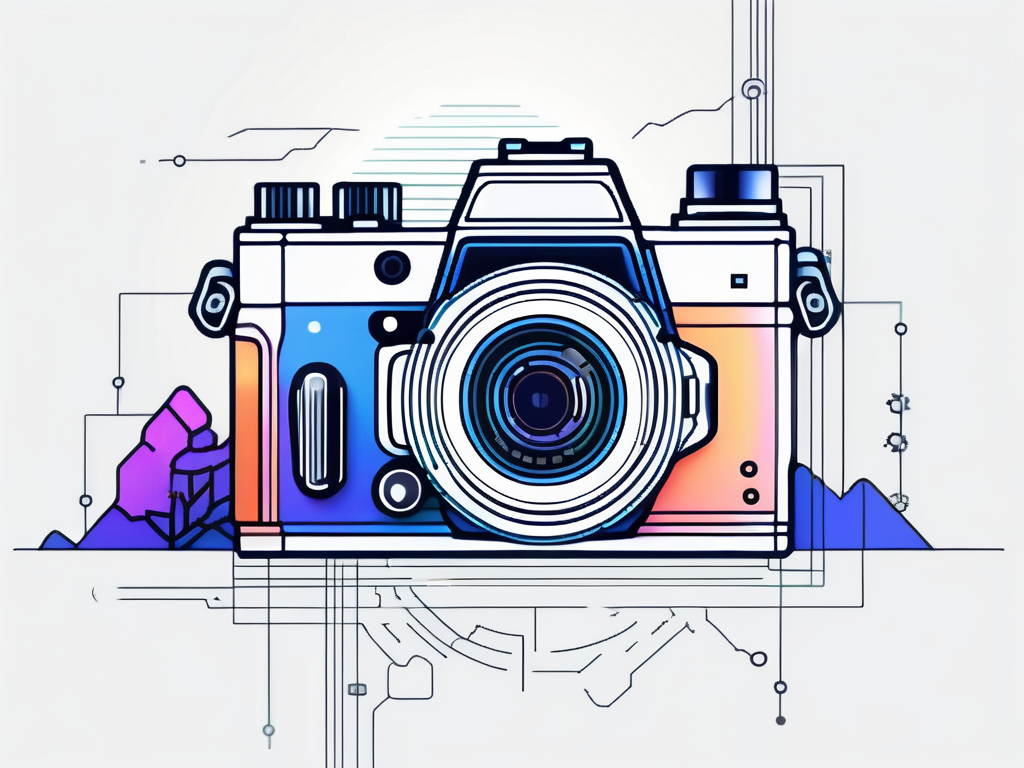In the world of product photography, AI (Artificial Intelligence) has emerged as a powerful tool that can greatly enhance your skills and take your images to the next level. AI technology has revolutionized the way we capture, edit, and present product photographs, allowing us to achieve stunning results with ease. In this article, we will explore the role of AI in product photography and delve into eight different techniques that can help you elevate your photography skills.
Understanding the Role of AI in Product Photography
The Intersection of AI and Photography
AI and photography might seem like an unlikely combination, but they actually go hand in hand. AI algorithms have the ability to analyze and interpret images like never before, enabling us to automate tasks that were once time-consuming and tedious. By harnessing the power of AI, photographers can focus more on their creative vision while leaving the technical aspects to intelligent algorithms.

One of the key areas where AI is making a significant impact in photography is in image recognition. AI-powered systems can now identify objects, scenes, and even emotions in photographs with remarkable accuracy. This not only streamlines the process of organizing and categorizing images but also opens up new possibilities for creating personalized and targeted visual content.
Why AI is a Game Changer in Product Photography
AI has transformed product photography by providing innovative solutions that enhance the overall quality and efficiency of the process. From improving image recognition to refining machine learning techniques, AI has revolutionized the way we capture and edit product images. With its ability to process vast amounts of data and detect patterns, AI enables photographers to produce visually appealing and compelling photographs that truly showcase the product’s features and benefits.
Furthermore, AI has enabled the development of virtual photoshoots, where products can be digitally rendered in lifelike environments without the need for physical prototypes. This not only saves time and resources but also allows for greater flexibility and creativity in presenting products in various settings and contexts. By leveraging AI in product photography, businesses can create captivating visual content that resonates with their target audience and drives engagement and sales.
Exploring Different AI Techniques
The Power of Image Recognition
One of the key AI techniques in product photography is image recognition. By training AI models to identify specific objects or features in a photograph, photographers can automate tasks such as cropping, resizing, or removing backgrounds. This not only saves time but also ensures consistency across product images, resulting in a more professional and cohesive presentation.

The Impact of Machine Learning
Machine learning algorithms play a crucial role in product photography by analyzing large datasets and learning patterns to improve image quality. By training AI models with high-quality images, photographers can automate tasks such as color correction, noise reduction, and sharpening. This allows for faster editing workflows and helps photographers achieve consistent results.
The Role of Neural Networks
Neural networks are another AI technique that can significantly enhance product photography skills. By simulating the way the human brain processes information, neural networks can generate realistic and high-resolution images from low-quality or compressed files. This technique is particularly useful when working with images that have been resized or need to be upscaled without losing detail.
For example, imagine a scenario where a photographer is working with a low-resolution image of a product. Using neural networks, the photographer can apply an upscaling algorithm that analyzes the image’s features and generates a higher-resolution version while preserving the important details. This allows the photographer to present the product in a more visually appealing and professional manner, even when the original image quality is limited.
The Advantages of Deep Learning
Deep learning, a subset of machine learning, has revolutionized the field of product photography. Deep learning algorithms can automatically segment objects in an image, allowing photographers to extract products from their backgrounds or apply selective adjustments. This technique enables photographers to focus on the product itself, emphasizing its unique features and creating visually striking images.
For instance, consider a scenario where a photographer needs to showcase a product against a different background. By utilizing deep learning algorithms, the photographer can easily isolate the product from the original image and place it seamlessly onto a new background. This not only saves time but also gives the photographer the freedom to experiment with different backgrounds and create captivating visuals that enhance the product’s appeal.
The Benefits of Computer Vision
Computer vision, a branch of AI that focuses on understanding and interpreting visual information, has numerous applications in product photography. By leveraging computer vision algorithms, photographers can automatically detect and correct anomalies such as lens distortion, perspective distortion, or aberrations. This ensures that product images are visually accurate and free from any technical imperfections.
For example, imagine a scenario where a photographer captures an image with slight lens distortion. Using computer vision algorithms, the photographer can automatically detect and correct this distortion, resulting in a more accurate representation of the product. This attention to detail not only enhances the overall quality of the image but also instills confidence in potential customers, as they can trust that the product is being accurately portrayed.
The Use of Natural Language Processing
Text plays a vital role in product photography, especially when it comes to e-commerce platforms. Natural Language Processing (NLP) techniques can analyze and generate descriptive text for product images, making it easier for customers to understand and engage with the product. By automatically generating captions or descriptions, NLP helps photographers communicate the product’s features and benefits more effectively.
For instance, imagine a scenario where a photographer needs to upload a large number of product images to an e-commerce website. By leveraging NLP techniques, the photographer can automatically generate relevant and engaging descriptions for each image, saving time and ensuring consistency in the product listings. This not only enhances the customer’s understanding of the product but also improves the overall shopping experience.
The Importance of Predictive Analytics
Predictive analytics is an innovative AI technique that can assist photographers in understanding customer preferences and optimize their product images accordingly. By analyzing data and user behavior, predictive analytics algorithms can suggest adjustments such as lighting, composition, or styling that are most likely to resonate with the target audience. This helps photographers create product images that are not only visually appealing but also highly engaging.
For example, imagine a scenario where a photographer is tasked with capturing images for a fashion brand’s new collection. By utilizing predictive analytics, the photographer can analyze customer data, such as previous purchase history and browsing behavior, to understand the preferences and trends of the target audience. Armed with this information, the photographer can then tailor the product images to align with the customers’ expectations, resulting in a more impactful and successful visual campaign.
The Effectiveness of Robotic Process Automation
Robotic Process Automation (RPA) is a powerful AI technique that can streamline repetitive tasks in product photography workflows. By automating processes such as file organization, batch editing, or image export, RPA frees up valuable time for photographers to focus on more creative aspects of their work. This not only improves efficiency but also minimizes the risk of errors and ensures consistent results across multiple images.
For instance, imagine a scenario where a photographer needs to edit and export a large number of product images for an online catalog. By utilizing RPA, the photographer can create a workflow that automatically applies predefined edits to each image, organizes them into appropriate folders, and exports them in the desired format. This not only saves time but also reduces the chances of human error, ensuring that all images are processed consistently and efficiently.
How to Incorporate AI Techniques into Your Photography Skills
Choosing the Right AI Tools
When incorporating AI techniques into your product photography skills, it is essential to choose the right tools that align with your specific needs and workflows. There are numerous AI-powered software and plugins available that offer a wide range of features, from image recognition to deep learning. Take the time to research and experiment with different tools to find the ones that best suit your requirements.

Learning to Use AI Techniques Effectively
While AI can greatly enhance your product photography skills, it is important to understand that it is still a tool and not a substitute for creative vision. To use AI techniques effectively, photographers should strive to strike a balance between automated processes and their artistic vision. Experimentation, practice, and refining your understanding of AI techniques will allow you to achieve the best possible results.
Balancing AI Technology with Artistic Vision
AI techniques are most effective when used as a complement to your artistic vision. While AI algorithms can automate repetitive tasks and enhance image quality, it is ultimately your creative eye and unique style that will differentiate your product photography. Embrace AI as a powerful ally and leverage its capabilities to bring your artistic vision to life.
By incorporating AI techniques into your product photography skills, you can take your images to new heights. From image recognition to deep learning, AI offers a multitude of tools and algorithms that enhance efficiency, improve image quality, and help you create visually stunning product photographs. Embrace the power of AI and start elevating your product photography skills today!